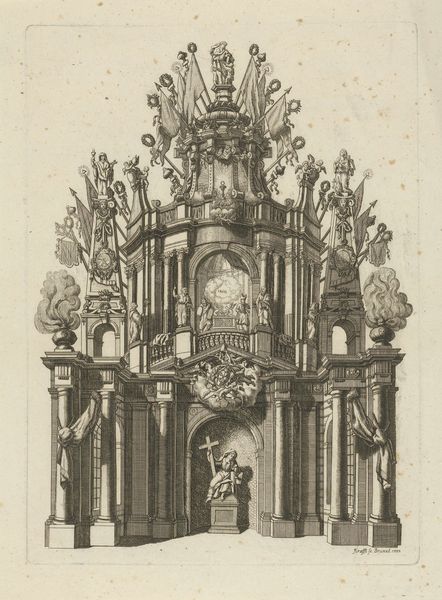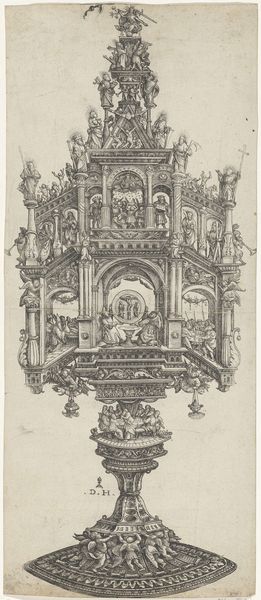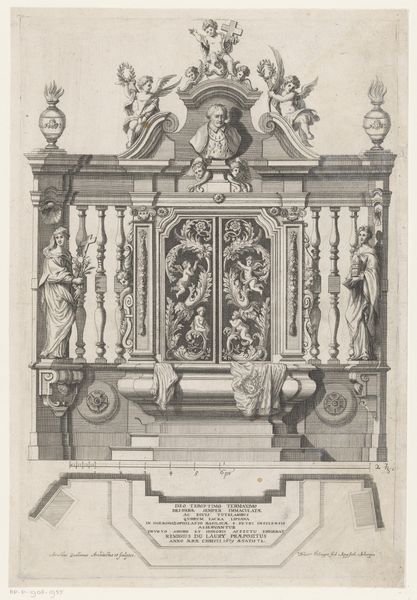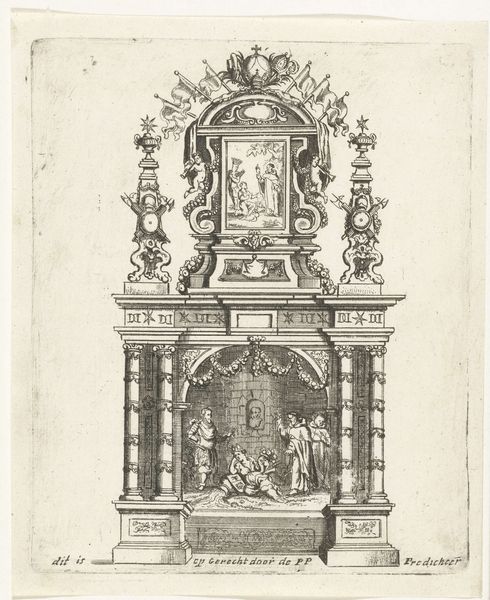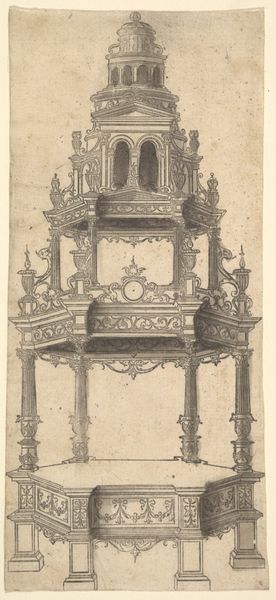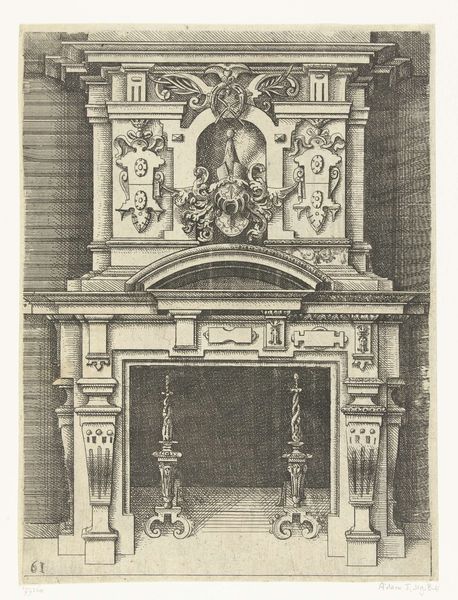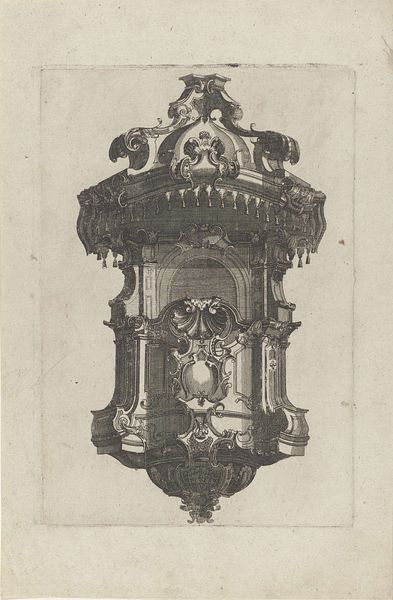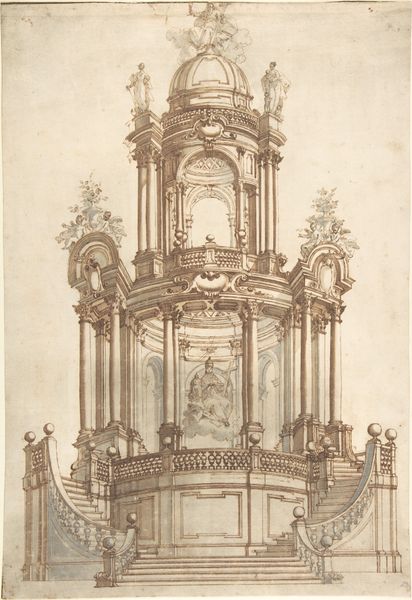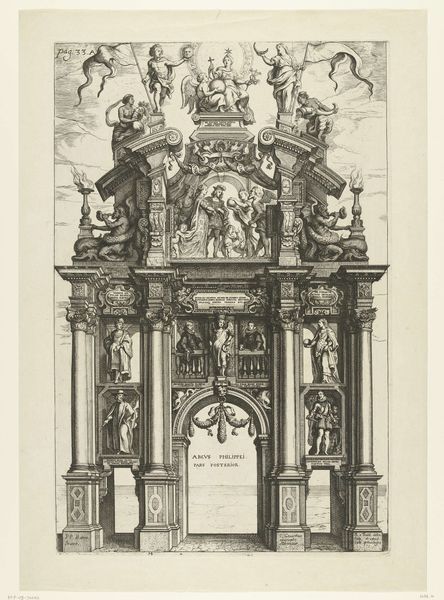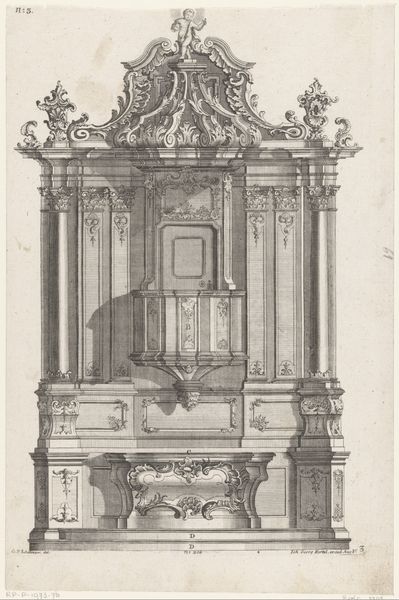
Triomfpoort opgericht te Antwerpen ter gelegenheid van de heiligverklaring van Petrus van Alcantara in 1669 1669
0:00
0:00
print, engraving, architecture
#
baroque
# print
#
old engraving style
#
history-painting
#
engraving
#
architecture
Dimensions: height 530 mm, width 361 mm
Copyright: Rijks Museum: Open Domain
Editor: Here we have "Triumphal Arch Erected in Antwerp on the Occasion of the Canonization of Peter of Alcantara in 1669," an engraving from that very year. It's so detailed! I’m struck by the elaborate architectural structure depicted and all of these figures inhabiting the scene. What stands out to you in this piece? Curator: Immediately, I notice how this image acts as a powerful form of cultural memory. Triumphal arches themselves are deeply rooted in Roman imperial iconography, signifying victory and divine favor. The very choice of this architectural form for Saint Peter of Alcantara’s canonization highlights a deliberate association between spiritual triumph and earthly power. What symbols can you identify being deployed here? Editor: Well, at the very top, there’s a figure surrounded by flags, seemingly ascending. I imagine that's meant to be Saint Peter himself. There are coats-of-arms throughout, too. Curator: Exactly. The flags, the coats-of-arms – these aren’t merely decorative. They speak to lineage, institutional power, and the endorsement of the Church. Even the architectural details, the columns and pediments, are not just structural. They borrow from a classical visual vocabulary to legitimize the saint’s status. How does the composition contribute to this effect? Editor: The arch frames a kind of stage, with the Saint seemingly elevated. People are kneeling before him. It’s all very deliberate in showing his importance. Curator: Precisely. And look closer, there is heavy use of curtains as if this image itself is staged! Each element – from the architectural framework to the human figures and symbolic devices– carries emotional, cultural, and psychological weight. Verbruggen successfully built a robust piece laden with multiple visual and historical cues. Editor: I hadn't considered how consciously symbols and visual language could be interwoven. It definitely adds a new dimension to understanding this work. Curator: Indeed. Reflect on how these calculated visual cues continue to resonate in modern culture even now.
Comments
No comments
Be the first to comment and join the conversation on the ultimate creative platform.
